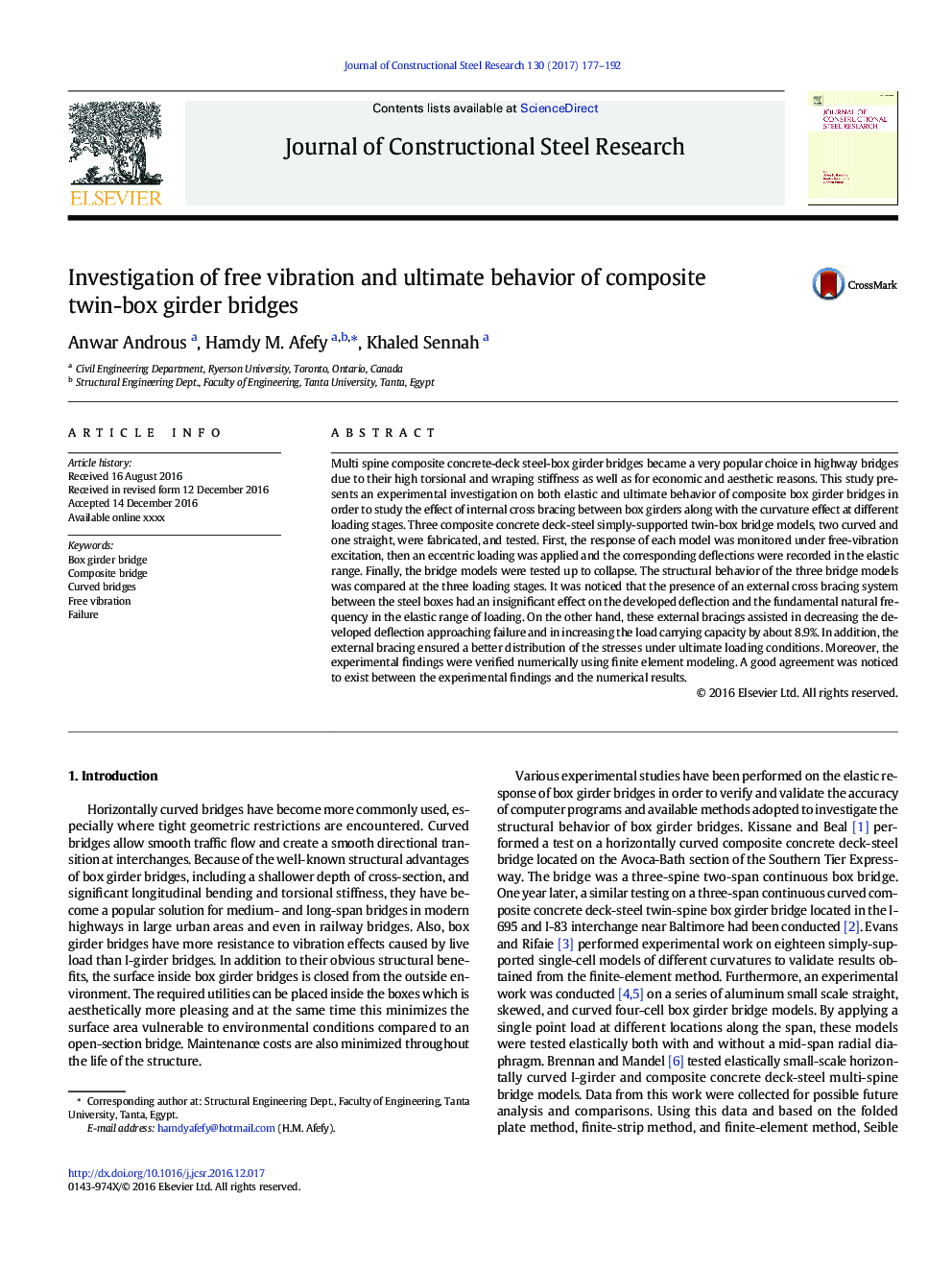| Article ID | Journal | Published Year | Pages | File Type |
|---|---|---|---|---|
| 4923534 | Journal of Constructional Steel Research | 2017 | 16 Pages |
Abstract
Multi spine composite concrete-deck steel-box girder bridges became a very popular choice in highway bridges due to their high torsional and wraping stiffness as well as for economic and aesthetic reasons. This study presents an experimental investigation on both elastic and ultimate behavior of composite box girder bridges in order to study the effect of internal cross bracing between box girders along with the curvature effect at different loading stages. Three composite concrete deck-steel simply-supported twin-box bridge models, two curved and one straight, were fabricated, and tested. First, the response of each model was monitored under free-vibration excitation, then an eccentric loading was applied and the corresponding deflections were recorded in the elastic range. Finally, the bridge models were tested up to collapse. The structural behavior of the three bridge models was compared at the three loading stages. It was noticed that the presence of an external cross bracing system between the steel boxes had an insignificant effect on the developed deflection and the fundamental natural frequency in the elastic range of loading. On the other hand, these external bracings assisted in decreasing the developed deflection approaching failure and in increasing the load carrying capacity by about 8.9%. In addition, the external bracing ensured a better distribution of the stresses under ultimate loading conditions. Moreover, the experimental findings were verified numerically using finite element modeling. A good agreement was noticed to exist between the experimental findings and the numerical results.
Related Topics
Physical Sciences and Engineering
Engineering
Civil and Structural Engineering
Authors
Anwar Androus, Hamdy M. Afefy, Khaled Sennah,
